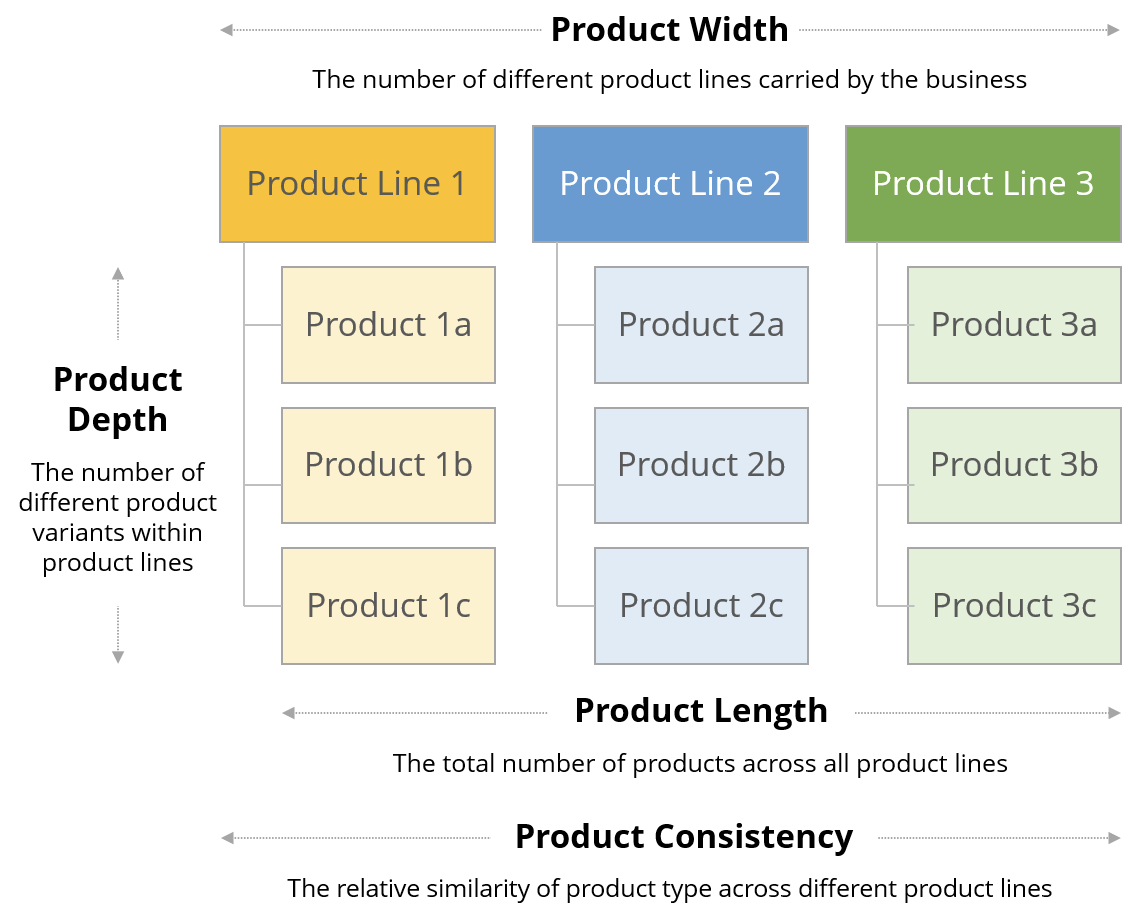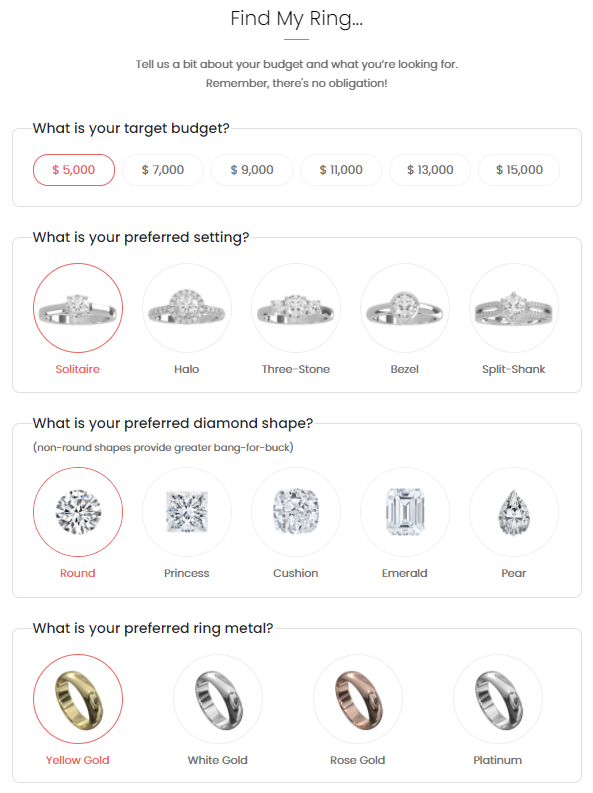Remember Goldilocks? She stumbles upon an empty house and finds three bowls of porridge. The first one is too hot, the second one is too cold, and the last one is just right.
What that final bowl of porridge was to Goldilocks—that's what your product mix needs to be to your business. Your product mix refers to the complete range of goods and services that your business offers. But that bland definition doesn't do justice to the importance of getting it just right.
You might think that the more things you sell, the greater the opportunity to make money. Seems intuitive enough—but it's not always the case. In stretching your product mix too wide, you can dilute the quality of the products you used to sell well. You also drain your limited production, marketing, and sales resources away from your core product offerings. This can result in customer dissatisfaction with products they once loved.
On the other hand, focusing too narrowly can get in the way of growth opportunities that line up nicely with your existing product offerings and capabilities. You might miss out on some simple—yet impactful—upsell or cross-sell opportunities. And in doing so, you might fail to take advantage of profitable economies of scale.

Product width, length, depth, and consistency
Before we dive into how to find your just right product mix, let's look at a few key concepts that are important to be familiar with.

When I first established my business, Ringcommend, I was so excited to be providing the general public with access to high-end jewelry at wholesale prices that I fell into a common trap: we were offering so many product lines (our product width) that we simply weren't able to deliver a premium offering for every product we sold. Nor were we able to execute targeted marketing campaigns across each and every product line with our limited budget.
In trying to be everything to everybody, we ended up being nothing to nobody. Our porridge was too hot.
We then switched gears, and narrowed our offering to become the leading providers of triple excellent solitaire engagement rings—a highly-popular style of diamond ring. But now our product length and depth had become too limited. We were leaving way too much money on the table and disappointing customers looking for similar products that we were unable to deliver. Our porridge was too cold.
These two experiences quickly led us to appreciate the importance of walking this delicate tightrope. We needed to figure out how to make our porridge just right.

Be thoughtful in your analysis
We were able to optimize our product mix through trial and error, but you can avoid that by doing some thoughtful analysis beforehand. Here are a few things to keep in mind:
Optimizing your product mix will be difficult if you don't have a clear goal that you're trying to achieve. For example, trying to win more customers versus trying to grow additional demand from your existing base will have very different implications.
Before making tweaks to your product mix, consider how it's looked up to this point. For each of your products, look at historic costs of production, sales volumes, and profitability. Make sure you understand the performance of these metrics over time.
It's especially important to understand your manufacturing and production costs. For example, adding an entirely new product line may be outside your current financial means, but making a small tweak to an existing product might be entirely possible.
There may also be significant cost savings to be won in scaling back your product mix—especially if production costs of certain lines are high but profitability remains low.
Fight the temptation to implement knee-jerk changes to your product mix. Make sure that you adopt a long-game mentality when optimizing your product mix, one that balances your short-term realities with your long-term goals.
Consider your brand and reputation
It's important to consider your brand and reputation when making adjustments to your product mix. If you have a strong brand reputation, you can likely expand your product mix to gain market share.
As an example, many Ringcommend customers are over the moon with the engagement ring they end up purchasing. Some customers think ahead and plan their wedding bands at the same time, so we recently added a wedding bands product line to our product width. We're well regarded for our engagement rings, so we were able to make that addition without a problem.
But you need to be cautious of spreading yourself too thin with too many products. If people don't really know what you do anymore, you run the risk of diluting your brand reputation.
Be mindful of messaging and positioning
Expanding your product mix will also change how you market new products. It will rarely be a copy-and-paste job that simply replaces the words Product A with Product B.
New products are likely to require bespoke product messaging and positioning that appeals to different customers in different markets. These may be different from the product messaging and positioning used by your current product mix to appeal to existing customers.

That's all to say that expanding your product mix is about more than the products—you need to be ready to handle the marketing that goes along with it too. If you're not ready for that, it might not be time to expand.
Consider natural product lifecycles

Decisions that impact your product mix shouldn't be made in a vacuum. What I mean is that all products go through a natural lifecycle that will affect how you change (or don't change) your product mix.
Certain products within your mix might currently be in (or soon approaching) maturity and/or decline. If this is the case for your business, you need to ensure that other products in your mix are able to compensate for resulting sales or profitability drops.
This may require increasing marketing efforts around certain products already within your mix or adding new products entirely.
Sales are important, but so are your margins
Different products have different levels of popularity, but your best sellers aren't always your highest-margin products. You get to choose which products you promote and you can ramp-up or ramp-down the extent to which you market certain products at any time.
If you've recently experienced a reduction in the volume of your sales, then it might be worth considering running marketing campaigns that shine a spotlight on products with better margins, until things improve.
Of course, not every business sells tangible products, and it can be hard to communicate value for services. Productizing your services is one way of capturing this value, letting you more easily add it to your product mix. Document the services, the time and resources that go into them, and the deliverables or outputs that benefit the customer. Once that's all itemized, it's easier to understand where it fits in your product mix.
Feel excited, not overwhelmed
There's no one porridge recipe for getting it just right: optimizing your product mix is both an art and a science.
Take comfort in the familiarity you have with your business, your market, and your customers. The fact that you're even asking yourself the hard questions and trying to get this right means you're on track. Because most businesses that falter when it comes to their product mix do so not through their efforts in optimizing, but rather through not considering it at all.
With all this in mind, you'll likely end up with a perfect bowl of porridge.
This was a guest post from Evian Gutman, founder and CEO of Ringcommend, which helps hopeless romantics find high-end engagement rings at wholesale prices. With incredible savings, a massive selection, and rapid turnaround times, Ringcommend is your one-stop shop for finding your perfect engagement ring without breaking the bank. Want to see your work on the Zapier blog? Check out our guidelines and get in touch.









